 Photo by: Vivienne Sclater
Photo by: Vivienne SclaterArchbold Biological Station Habitats

Oak Hickory scrub
This habitat occurs only on yellow sand ridges. The dense vegetation is primarily a mix of scrub oaks and scrub hickory. It is similar in structure to Sand Pine Scrub, but usually with only a scattered sand pine and Slash Pine (Pinus elliottii) overstory.
Southern ridge sandhill
This Slash Pine/Wiregrass (Aristida stricta) variant of a widespread southeast ecosystem is endemic to the southern end of the Lake Wales Ridge, where it has been nearly eliminated for citrus cultivation. This ecosystem is characterized by frequent, low-intensity fires.
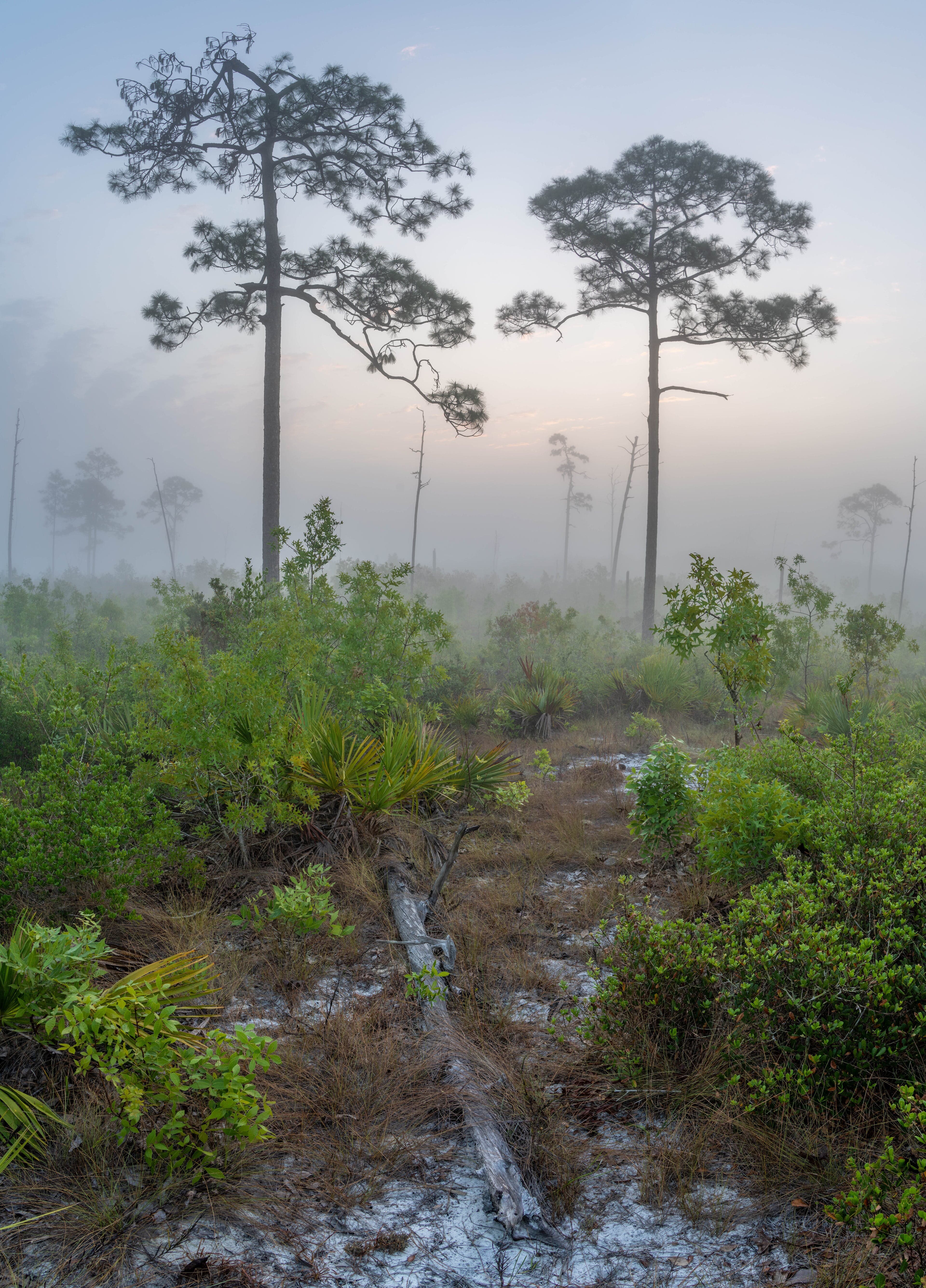

Rosemary scrub
One of the most distinctive plant communities in the United States, this shrubby formation harbors an exceptionally high density of endemic, endangered plant species. Open sand gaps amongst the stands of Florida rosemary (Ceratiola ericoides) and other shrubs harbor many of these endemic herbs. Fire is relatively rare compared to other scrub types having occurred naturally every 15-100 years. Over 100 "rosemary balds" occur on Archbold property, one of the finest protected expanses of this habitat.
Sand Pine scrub
This dry scrub habitat is dominated by a mixture of scrub oaks (Quercus spp.), staggerbush (Lyonia spp), and scrub hickory (Carya floridana), often under a dense canopy of sand pine (Pinus clausa). This association burns infrequently, about once every 20+ years, so the understory vegetation is often very dense and difficult to move through. Long-unburned Oak Hickory and Rosemary scrub can transition to Sand pine scrub.
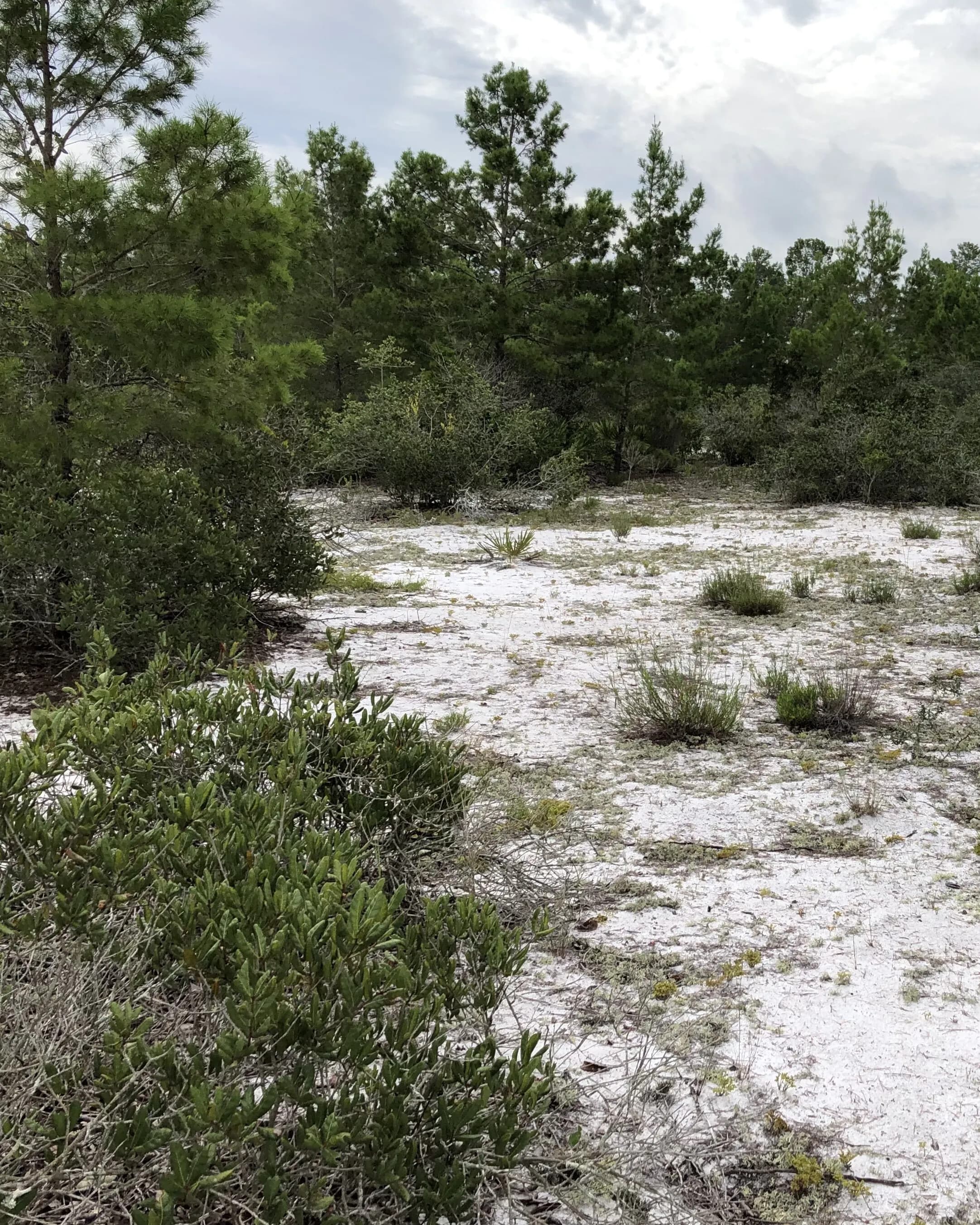 Photo by: Bret Budach
Photo by: Bret Budach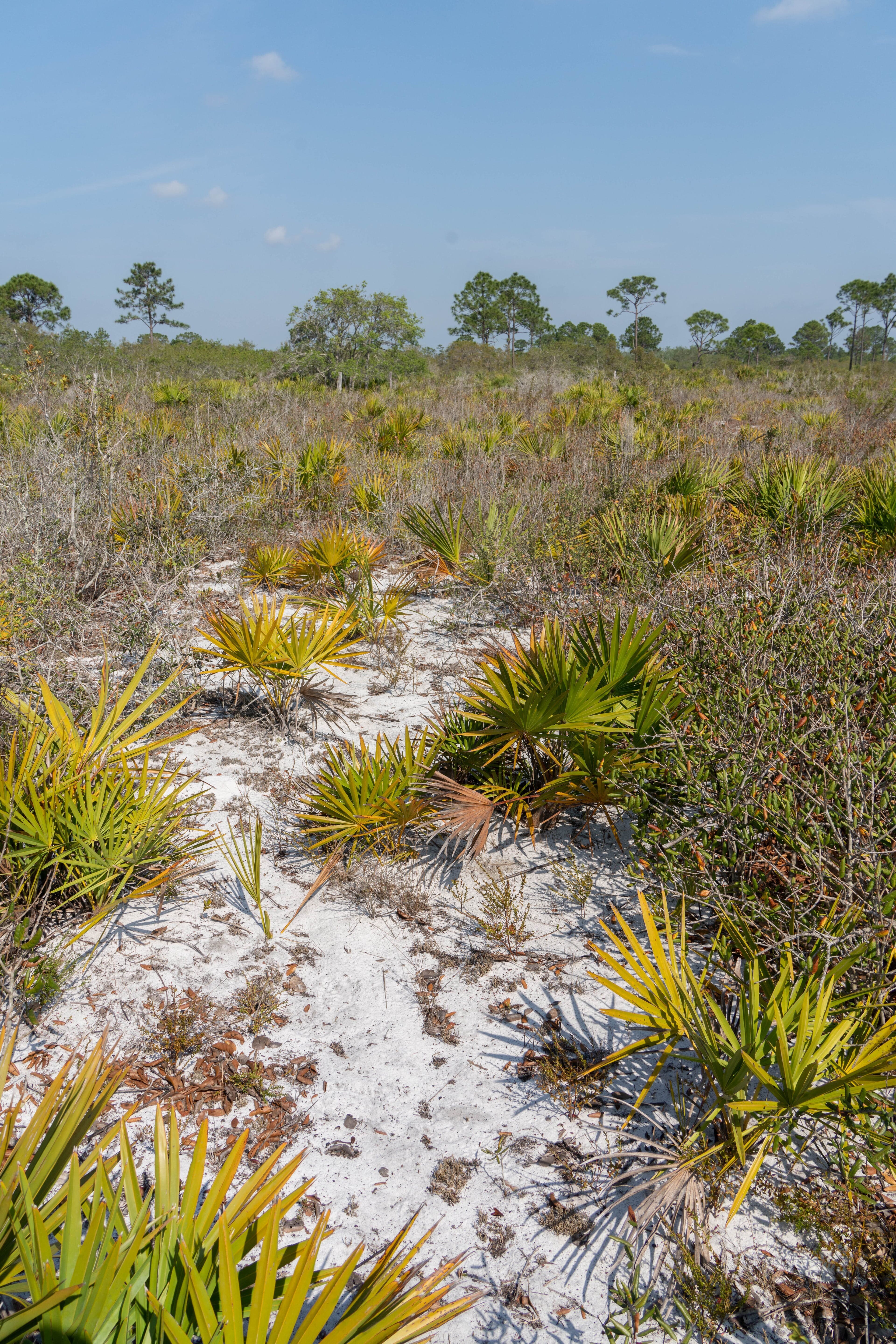
Scrubby flatwoods
Sometimes called "Oak scrub," this open shrubland is dominated by shrub oaks and palmettos, with scattered south Florida Slash Pine. This is the primary habitat for the Florida Scrub-Jay and makes up nearly 1/3 of Archbold Biological Station's area. Scrubby flatwoods occur closer to the water table than Rosemary scrub but are drier than flatwoods. They naturally burned at an intermediate frequency, every 5-20 years.
Flatwoods
This was the most widespread natural habitat of peninsular Florida and makes up about ¼ of Archbold Biological Station's area. Flatwoods are dominated by Slash Pine, Saw Palmetto (Serenoa repens), Gallberry (Ilex glabra), Cutthroat grass, and wiregrass. Flatwoods often burn several times per decade.
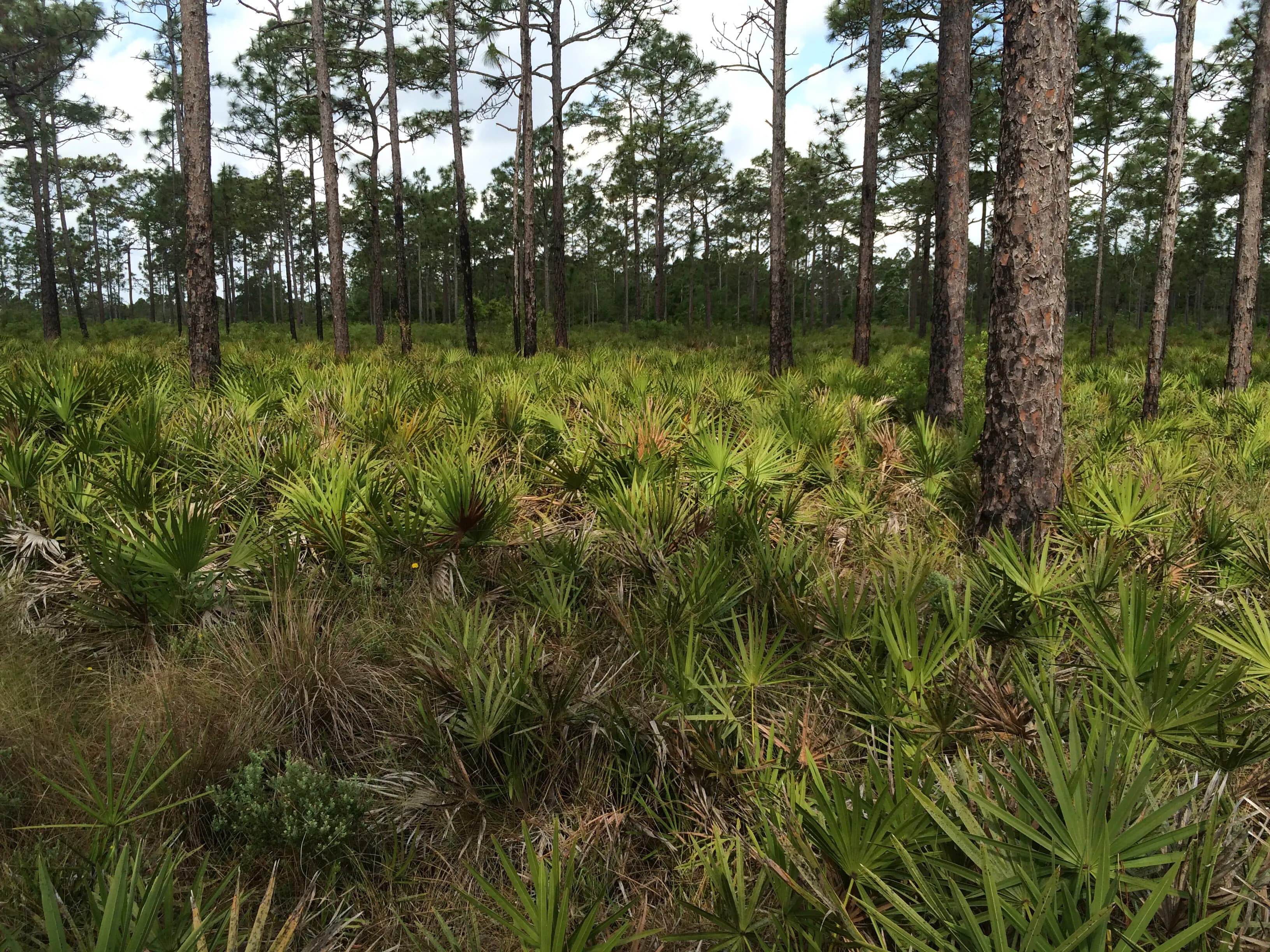

Bayhead
A distinctive southern specialty, these evergreen forests of mixed bay tree species (Gordonia lasianthus, Magnolia virginiana, Persea borbonia) occur on low, poorly drained areas with organic soils. Fire occurs rarely but can move in from surrounding flatwoods and scrubby flatwoods during dry conditions. Bayheads can invade long-unburned seasonal ponds and are favored habitat of Florida Black Bears.
Swales and seasonal ponds
These grassy depressions occur where drainage is poor. Many are inundated during the summer rainy season and in wet winters. Species composition varies considerably and forms rings around ponds according to the variable duration of inundation and soil moisture. Several narrowly endemic plants, such as Cutthroat Grass (Panicum abscissum) and Edison's St. John's wort (Hypericum edisonianum) as well as palmettos, sedges (e.g., Eleocharis spp.) and yellow-eyed grasses (Xyris spp.) are found here. More than 350 seasonal ponds exist at Archbold Biological Station. Fire can commonly sweep across grassy ponds during dry periods, but will skip around ponds when they are flooded.
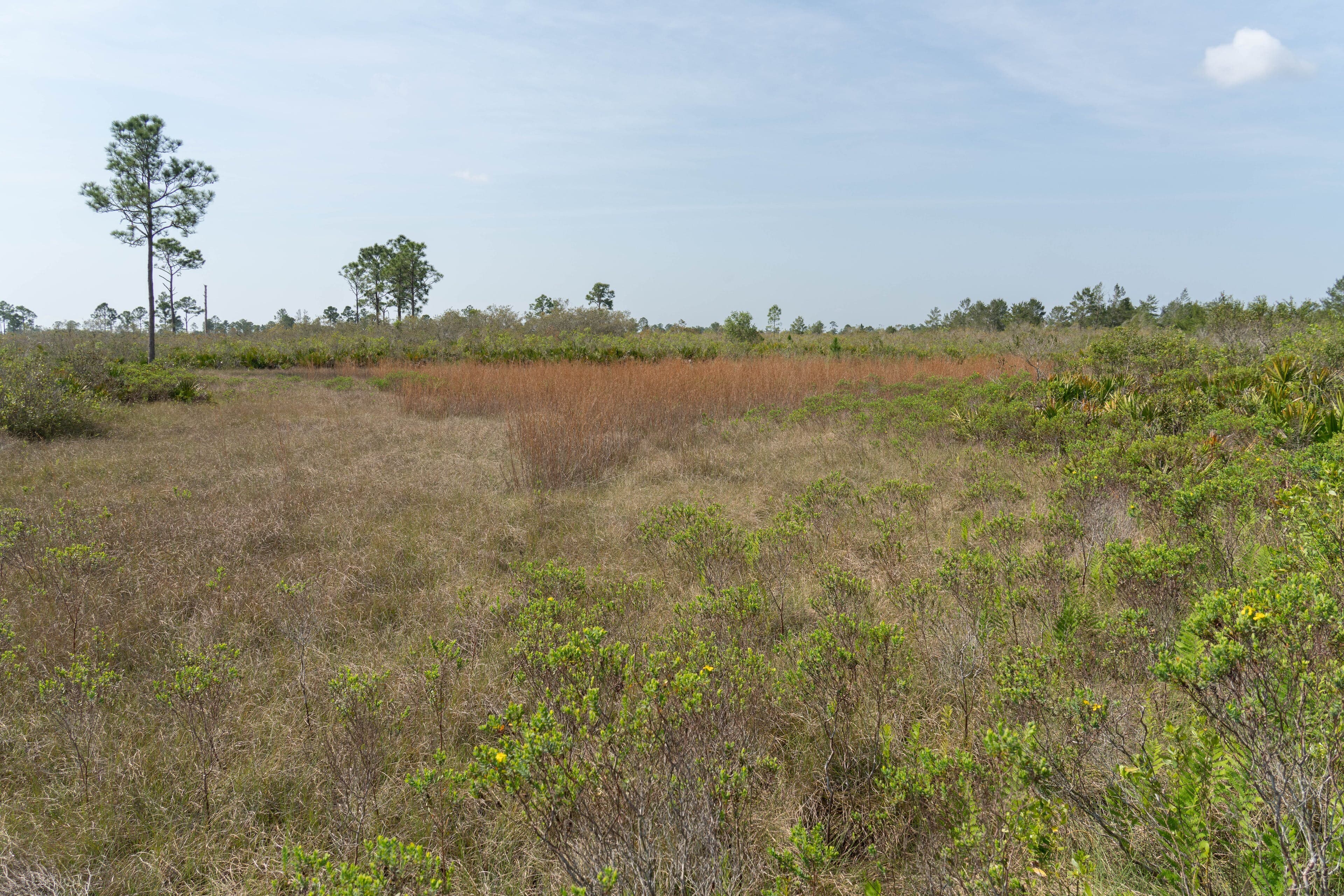
.jpg&w=3840&q=75)
Cutthroat seeps
These native herbaceous wetlands formed at the edge of the Lake Wales Ridge where water seeps through the sand soils. The Florida endemic Cutthroat Grass dominated the habitat, but has been removed in favor of pasture grasses in much of its former range. Archbold Reserve has some remaining seep habitat and is restoring its hydrology.
Pasture
Extensive areas of pasture are located on the Reserve. These disturbed areas were largely a mixture of cutthroat seeps and palmetto flatwoods before being altered for cattle grazing in the 1970’s. Archbold acquired this property in 2002 and is actively working on research with a focus on restoring altered systems to a more native condition. Initial work on restoring wetlands has already begun. Two types of pastures are found on the Reserve: Improved pastures which were planted with exotic grasses favored by cattle and semi-native pastures which contain a mix of native grasses (e.g., Bluestems Andropogon).
-1.jpg&w=3840&q=75)
.jpg&w=3840&q=75) Photo by: Reed Bowman
Photo by: Reed BowmanLake Annie
Lake Annie, a 67-feet deep sinkhole lake, 90-acres in size, lies at 111-feet above sea level at the north end of Archbold Biological Station. The lake receives 10% of its water from rain, and 90% through groundwater, as well as inflow from intermittent ditches from the Archbold property. Water from Lake Annie flows north to Lake Placid, via groundwater and an outflow creek, then follows the downward slope of land through a chain of lakes, and eventually south to the coast.